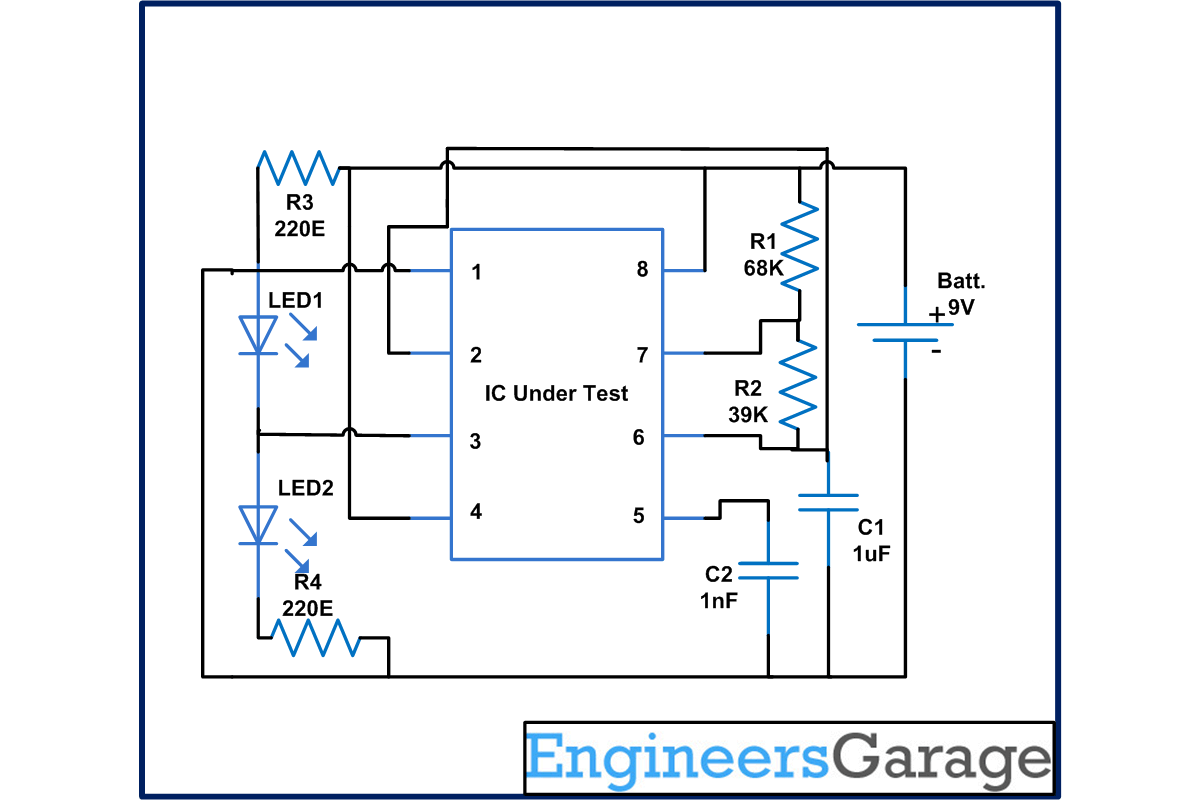This IC testing circuit can test any of the 555 timer IC. This is done by testing whether it is oscillating or not. By using this tester it can be immediately tested whether the timer is functional or not. It also tells if it is shorted or oscillating. If both the LEDs are flashing, the timer is in good working condition and if both the LEDs are OFF or on solid then it is defective. It can also be used as a trouble shooter in 555 based circuits.
When the voltage is supplied to pin2 (trigger input), it is less than 1/3 of supply voltage. The output of the lower comparator forces the flip flop to have low logic state which means output stage has reversing action. In other words, we can say that when the output of the flip flop is LOW, the 555 timer’s output goes HIGH.
Circuit Diagrams
Project Components
Filed Under: 555 Timers, Electronic Projects



Questions related to this article?
👉Ask and discuss on EDAboard.com and Electro-Tech-Online.com forums.
Tell Us What You Think!!
You must be logged in to post a comment.